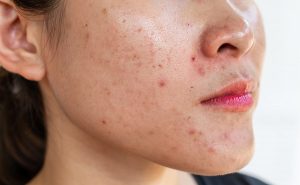It’s common to find a pitcher soaking their elbow in an ice bucket following a baseball game, in an effort to save their arm for tomorrow’s innings.
But athletes about to hit the turf would be better off soaking their aching muscles and joints in a hot tub rather than an ice bath, researchers report in a new small-scale study.
A hot soak appears to improve exercise performance among athletes, researchers found.
On the other hand, cold soaks are better for lowering inflammation, swelling and fatigue, results show.
“While post-exercise [cold water immersion] is common on the sports field, cooling does not always have a positive effect on exercise capacity,” lead researcher Mamoru Tsuyuki, a master’s student in sports and health science at Ritsumeikan University in Shiga, Japan, said in a news release.
For the study, researchers asked a small group of endurance athletes to perform 50 minutes of high-intensity interval running, followed by 20 minutes of either a cold-water soak at 59 degrees Fahrenheit or a hot-water tub at 104 degrees F.
One hour after the workout, researchers measured the athletes’ jump height and blood levels of enzymes that indicate muscle soreness.
The athletes jumped higher after a hot soak compared to a cold soak, results show.
“The novel findings from our study are that post-exercise hot water immersion promoted recovery of muscle power output compared to post-exercise cold water immersion,” Tsuyuki said. “The findings will be useful for people who conduct multiple sessions of exercise or competition within a day.”
Hot water increases blood flow to damaged muscle fibers, helping them repair themselves and become stronger, Tsuyuki told NBC News.
“When you need to perform twice in the same day, such as in sports that have a halftime, heat is better,” Tsuyuki said. “During the 15 or 20 minutes, if you can immerse yourself in hot water, you can probably perform better in the second half.”
Experts said that both hot and cold baths have an impact on blood flow to the muscles, and are likely useful depending on an athlete’s circumstances.
“I wouldn’t throw out cold baths,” Dr. Spencer Stein, an assistant professor of orthopedic surgery at the NYU Grossman School of Medicine, told NBC News. “There are studies that show cold baths can decrease soreness.”
However, “my experience with pro teams is they like warm baths before games,” Stein added. “If there’s a halftime, they don’t do a cold plunge.”
David Putrino, director of rehabilitation innovation at the Mount Sinai Health System in New York City, recommends that people soak either in 98- to 104-degree water for 10 to 20 minutes if they want a hot soak, or 10 to 15 minutes in 50- to 59-degree water for a cold soak.
Some folks love cold plunges because they feel energized afterward, Putrino said.
“Once they get out, their body is flooded with endorphins, the feel-good chemicals, and they get an immense rush of energy,” Putrino told NBC News.
“My recommendation is to use your own data to understand what works for you,” he said. “Don’t believe what you’re hearing on podcasts.”
Researchers presented these findings Thursday at the 2024 Integrative Physiology of Exercise conference at State College, Penn.
Because these findings were presented at a medical meeting, they should be considered preliminary until published in a peer-reviewed journal.
More information
Stanford University has more on cold water immersion.
SOURCES: American Physiological Society, news release, Nov. 18, 2024; NBC News, Nov. 23, 2024
Copyright © 2025 HealthDay. All rights reserved.

























